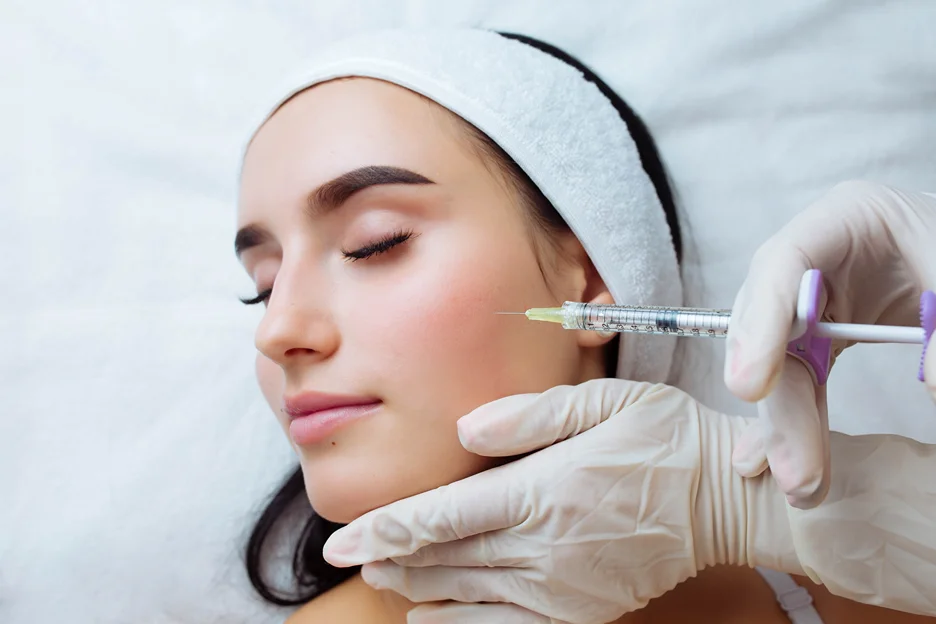Preparing for your derma filler appointment can feel overwhelming. Knowing what to expect helps ease anxiety and ensures the best results. Research your provider’s qualifications and read reviews, including tips from satisfied dermal filler clients, to find trusted dermal filler experts in cosmetic surgery. Discuss your goals and any concerns during the consultation.
Understanding aftercare is just as crucial. Follow pre-appointment guidelines, like avoiding blood thinners and alcohol. This preparation sets you up for success, making the experience smoother and more enjoyable. With the right mindset and information about filler injections and dermal filler treatments, you’ll step into that appointment feeling confident and ready. Get informed, stay calm, and embrace the enhancement journey ahead.
Key Takeaways
-
Research Providers: Always choose a qualified provider for your dermal filler appointment by checking their credentials and reading patient reviews to ensure safety and effectiveness.
-
Prepare for Consultation: Use the initial consultation to ask questions about the procedure, discuss your goals, and understand the different types of fillers available.
-
Timing Matters: Plan your dermal filler treatment appointment at a time when you can relax afterward, as swelling or bruising may occur from the filler injection, and you’ll want to avoid social engagements immediately after.
-
Avoid Certain Substances: Refrain from alcohol and blood thinners before your dermal filler treatment to minimize the risk of bruising and complications from filler injection.
-
Hydrate Well: Drink plenty of water leading up to your appointment for your dermal filler, and skip makeup on the day of the filler injection procedure to ensure clean skin for treatment.
-
Follow Aftercare Instructions: Adhere to aftercare guidelines provided by your provider to promote healing and achieve the best results from your dermal fillers.
Understanding Dermal Fillers
Key Components
Dermal fillers contain several key ingredients. Hyaluronic acid is one of the most popular components. This substance naturally occurs in the body. It helps retain moisture and adds volume to the skin. Another common ingredient is calcium hydroxylapatite. This mineral-like compound helps stimulate collagen production in dermal filler treatment, providing a more lasting effect.
Purpose of Fillers
The primary purpose of dermal fillers is to enhance facial volume. They can effectively reduce wrinkles and fine lines. Many people seek dermal filler treatments to achieve a more youthful appearance. These dermal filler treatment injections can restore lost volume in areas like cheeks and lips. Clients often report feeling more confident after treatment.
Common Treatment Areas
Several areas on the face are commonly treated with dermal fillers. The lips are a popular choice for enhancement. Lip fillers add fullness and shape, creating a more defined look. Cheeks also benefit from filler injections, providing a lifted and contoured appearance.
Another area frequently treated is the nasolabial folds. These lines run from the nose to the corners of the mouth after dermal filler treatment. Filling these lines can create a smoother look around the mouth and nose.
Types of Fillers
Different fillers serve various purposes. For instance, Juvederm lip filler is specifically designed for lip enhancement. It provides smooth results and natural-looking volume. Other fillers, like Radiesse, focus on deeper wrinkles and restoring structure to the face.
Clients may choose regular filler injections for ongoing results. These treatments can help maintain that youthful glow over time. Discussing options with dermal filler experts can guide clients in selecting the best type of filler for their needs.
Aftercare Recommendations
After receiving dermal filler injections, proper aftercare is essential. Clients should avoid strenuous exercise for at least 24 hours post-treatment. This helps minimize swelling and bruising. Keeping the treated area clean is crucial for preventing infection.
Ice packs can be applied to reduce swelling as well. Avoiding alcohol and blood thinners before an appointment can also help with recovery.
Choosing a Qualified Provider
Verify Credentials
A qualified provider is crucial for a safe dermal filler appointment. Check the provider’s credentials first. They should have proper licensing and training in cosmetic procedures. Look for certifications from recognized medical boards.
Experience matters as well. A provider with years of practice often has better skills. This can lead to more successful outcomes. Ask about their specific experience with dermal fillers. Providers should be able to show proof of their expertise.
Successful Treatments
Next, evaluate the provider’s history of successful treatments. Research their past work. A good provider will have a portfolio of before-and-after photos. This gives insight into their results.
Client satisfaction is another important factor. Look for testimonials or reviews from previous patients. High ratings usually indicate a positive experience. You want to choose someone who consistently meets client expectations.
Seek Recommendations
Ask trusted sources for recommendations on providers. Friends or family who have had similar treatments can offer valuable insights. Their personal experiences may help you find a reliable professional.
Online reviews are also useful. Websites like RealSelf or Yelp provide patient feedback on various providers. These platforms allow you to see both positive and negative experiences.
Understand Risks
Choosing the wrong person can lead to complications and risks. Some common risks include bruising, swelling, or even infection. A qualified provider minimizes these risks through proper techniques and hygiene practices.
You should feel comfortable discussing any concerns with your chosen provider. They should be open to answering questions about the procedure and its risks.
Initial Consultation
Schedule an initial consultation with your selected provider. This meeting allows you to gauge their professionalism and communication style. During this time, discuss your goals and expectations openly.
The provider should listen carefully and offer tailored advice based on your needs. If they rush through your consultation or dismiss your concerns, consider looking elsewhere.
Trust Your Instincts
Trust your instincts when choosing a provider. If something feels off or uncomfortable, it’s okay to walk away. Finding the right person is essential for your comfort and safety during the procedure.
A qualified provider will prioritize your well-being throughout the process.
Initial Consultation
Communicate Goals
During the initial consultation, you should clearly communicate your aesthetic goals. Discuss what you hope to achieve with the treatment. Whether you want more volume in your lips or a smoother face, be specific.
Providers need to understand your expectations. This helps them create a tailored treatment plan. Make sure to express any concerns about the procedure as well. They can address these issues and help ease your mind.
Medical History
Disclosing relevant medical history is crucial. Inform the provider about any allergies you have. Mention all medications you are currently taking, including over-the-counter drugs. Some medications can affect how your body responds to injections.
Providers may ask about previous cosmetic procedures as well. This includes any past cosmetic surgery or injections you’ve had. Being honest ensures safety and effectiveness during the treatment.
Facial Evaluation
Expect the provider to evaluate your facial structure during the consultation. They will assess areas needing enhancement or correction. This evaluation helps them decide on the best approach for your treatment.
Providers often take time to discuss different options available for lip injections and other areas. They may recommend specific products based on your needs and desired outcomes.
Understand Risks
Every procedure carries risks, including bruising and swelling. Providers should explain these potential side effects during the consultation. Understanding these aspects can prepare you for what to expect after the injections.
You may experience some discomfort during the procedure as well. Discuss ways to minimize this discomfort with your provider. Many use ice packs before and after injections to reduce swelling and bruising.
Time Commitment
The initial consultation usually lasts about 30 minutes to an hour. This timeframe allows for a thorough discussion of your goals, medical history, and facial evaluation. It’s essential not to rush through this process.
After the consultation, providers will often schedule your appointment for injections. They will inform you of any preparations needed before the procedure. Understanding this timeline can help you plan accordingly.
Research Provider’s Recommendations
Suggested Fillers
Providers often recommend specific types of fillers based on individual needs. Common options include hyaluronic acid and collagen-based fillers. Hyaluronic acid fillers add volume and hydration. They typically last from six months to a year. Collagen-based fillers can provide longer-lasting results but may require more downtime.
Research shows that different fillers have unique outcomes. For instance, some are better for fine lines, while others work well for deeper wrinkles. Understanding these differences helps in choosing the right option.
Potential Risks
Every treatment comes with potential risks. Common side effects include swelling, bruising, and redness at the injection site. These effects usually subside within a few days. However, serious complications can occur, such as allergic reactions or infections.
Discussing these risks with your provider is crucial. They can offer insights on how to minimize them. Knowing what to expect can ease anxiety about the procedure.

Expected Benefits
Many patients seek dermal fillers for aesthetic improvements. The benefits often include enhanced facial volume and improved contours. Results can boost self-esteem and confidence.
Providers emphasize realistic expectations. Fillers can enhance appearance but won’t create dramatic changes. Understanding this helps align your goals with possible outcomes.
Post-Treatment Care
After the procedure, providers will give specific care instructions. These guidelines help ensure optimal results and reduce complications. Common advice includes avoiding strenuous exercise and excessive sun exposure for a few days.
Follow-up appointments may also be necessary. Providers will check the results and address any concerns you have. Staying in touch with your provider is essential for achieving desired outcomes.
Supplements and Medications
Before your appointment, discuss any supplements or medications you take. Some can increase bruising or interfere with healing. Blood thinners like aspirin or certain herbal supplements should be mentioned to your provider.
They may recommend stopping these medications a week before treatment. This step reduces the risk of complications during the procedure.
Day of Appointment
On the day of your appointment, arrive with a clear mind. Bring any questions you have prepared from your research. This ensures you understand every aspect of the treatment.
Wearing comfortable clothing can also help you relax during the process. A calm demeanor contributes positively to your overall experience.
Plan Your Appointment Time
Choose Your Timing
Selecting the right time for your filler appointment is crucial. Avoid scheduling it just before a major event. Recovery can take a few days. You want to look your best, not deal with swelling or bruising during an important occasion.
Consider planning your appointment at least a week ahead of any big events. This gives your body time to recover. For example, if you have a wedding or a party coming up, aim for the appointment at least seven days prior. This way, you can enjoy the event without worrying about any side effects.
Allow Recovery Days
Think about when you can take it easy after the treatment. The first few days are often the most important for recovery. Your body needs time to adjust to the filler. Schedule your appointment on a day that allows for rest afterward.
Taking a long weekend can be beneficial. If you can, book your appointment on a Friday. This gives you Saturday and Sunday to relax and monitor any changes. You’ll feel more comfortable knowing you have time to heal without rushing back to your daily routine.
Arrange Transportation
Transportation is another key factor in planning your appointment. After receiving fillers, some people may experience discomfort or swelling. It’s wise to arrange for someone to drive you home if needed.
Public transportation might not be ideal post-treatment. Consider asking a friend or family member for help. Having someone with you can provide comfort and support during this time.
Check Your Age and Area
Your age and the area being treated can also influence when to schedule your appointment. Younger individuals may have quicker recovery times, while older clients may need more time. Discuss this with your provider during consultations.
Certain areas of the face might swell more than others. For instance, lip fillers often result in more visible swelling compared to cheek fillers. Knowing these details helps you plan accordingly.
Confirm Your Schedule
Before finalizing your filler appointment, confirm all details with your provider. Ensure they understand your timeline and any concerns you may have. Clear communication helps avoid any misunderstandings.
Make sure to ask about specific aftercare instructions tailored to your situation. Knowing what to expect will ease any anxiety leading up to the appointment.
Avoid Alcohol and Blood Thinners
Alcohol Consumption
Refrain from consuming alcohol at least 24 hours before your appointment. Alcohol can thin your blood and increase the risk of bruising. It can also lead to swelling after the procedure. By avoiding alcohol, you give your body a chance to be in its best condition for treatment.
e people may think a drink will help them relax before the appointment. However, this is not worth the potential complications. The goal is to have smooth results without unnecessary side effects.
Medications and Supplements
Stop taking blood-thinning medications or supplements as advised by your provider. Common blood thinners include aspirin, ibuprofen, and certain herbal supplements like garlic or ginkgo biloba. These substances can interfere with the body’s ability to clot blood.
Consult your healthcare provider about when to stop these medications. It may be necessary to pause them several days before your appointment. Always follow their guidance closely. This helps ensure safety during the procedure.
Minimizing Risks
Understanding that avoiding these substances helps minimize bruising and swelling is crucial. Bruises can take time to heal, potentially impacting the appearance of your results. Swelling can also alter how your fillers settle into place.
By preparing properly, you enhance the chances of achieving optimal results. Many patients notice that following these guidelines leads to a smoother recovery process. This allows them to enjoy their new look sooner without complications.
Importance of Preparation
Preparation plays a key role in the success of any cosmetic procedure. Following these steps shows that you are serious about your treatment. It also builds trust between you and your provider.
Your provider wants what is best for you. They will provide specific instructions tailored to your needs. Adhering to these recommendations reflects positively on you as a patient.
Final Thoughts
Stay Hydrated and Skip Makeup
Hydration Importance
Drinking plenty of water before your appointment is essential. Proper hydration improves your skin’s condition. It can help reduce the appearance of wrinkles and promote a more youthful look. Aim for at least eight glasses of water daily in the days leading up to your treatment. This simple step ensures that your skin remains plump and healthy.
Dehydrated skin may not respond well to fillers. When skin lacks moisture, it can appear dull and lifeless. This makes it harder for the filler to integrate smoothly. Therefore, focus on hydration to achieve the best results from your procedure.
Clean Face Requirement
Arriving with a clean face is crucial for a successful appointment. Make sure to skip makeup on the day of your treatment. This allows the practitioner to apply the filler directly onto clean skin. It reduces the risk of irritation and infection during the procedure.
Using normal skincare products is acceptable before your appointment. However, avoid heavy creams or oils that might leave residue on your skin. A gentle cleanser will prepare your face effectively. Washing your face thoroughly helps ensure that no makeup or dirt interferes with the treatment.
Moisturizer Application
Applying a gentle moisturizer before your appointment can be beneficial. It keeps your skin supple and ready for treatment. Choose products that are lightweight and free from strong fragrances or irritants.
A good moisturizer helps maintain skin elasticity. This is important since fillers work best on well-hydrated, elastic skin. Lightly moisturized skin allows for smoother application of fillers, enhancing overall results.
Avoid using any new skincare products just before your appointment. Stick to your normal skincare regimen to prevent unexpected reactions. Consistency is key in preparing your skin for this type of treatment.
Final Preparations
Plan ahead for your appointment by ensuring you have everything ready. Remember to stay hydrated and maintain a clean face without makeup. These steps enhance both comfort and effectiveness during the procedure.
Following these guidelines sets you up for success with dermal fillers. They help minimize potential complications while maximizing results. Your skin deserves attention and care leading up to this moment.
What to Expect During Appointment
Procedure Duration
Appointments for dermal fillers are typically quick. Most procedures take under half an hour. This short timeframe makes it easy to fit into a busy schedule.
During the appointment, the provider will first discuss your goals. They will explain the process and answer any questions you may have. After this discussion, they will prepare for the injections.
Numbing Cream
Before starting the procedure, the provider applies a numbing cream. This cream helps reduce any discomfort during the injections. Many patients report feeling minimal pain or pressure. The numbing effect usually takes about 10-15 minutes to kick in.
Once the area is numb, the provider begins the injections. They use a fine needle to ensure precision. You may feel a slight pinch, but it should not be painful. Most people find the experience tolerable.
Injection Process
The provider will make precise injections based on your desired outcome. They carefully assess each area before proceeding. This attention to detail ensures natural-looking results.
During the process, you might notice some adjustments being made. The provider may ask for your feedback as they inject. This interaction helps achieve the best possible look.
After completing the injections, the provider will clean the area. They may apply ice packs to reduce swelling and bruising. Swelling is common but usually subsides within a few days.
Post-Care Instructions
After your appointment, follow any post-care instructions given by your provider. These instructions may include avoiding strenuous exercise for at least 24 hours. Staying away from heat sources like saunas or hot tubs can help prevent complications.
You might also want to avoid touching your face immediately after treatment. This helps prevent infection and ensures the fillers settle properly.
Results Timeline
Results from dermal fillers are often visible immediately after the procedure. However, full effects may take several days to fully develop as swelling decreases. It’s essential to allow time for your body to adjust.
Many patients enjoy their results for several months before considering touch-ups. Regular appointments help maintain a youthful appearance over time.
Aftercare and Recovery
Treatment Care
Following your dermal filler appointment, specific aftercare instructions are crucial. These guidelines help ensure the best results. Your provider may recommend using ice packs on the treatment area. This can help reduce swelling and discomfort. Apply ice packs for 10-15 minutes at a time during the first few hours post-treatment.
You should also avoid touching or massaging the treated areas. This can disturb the filler and alter its placement. If you experience any swelling or bruising, it is usually temporary. Most effects will subside within a few days.
Rest and Effects
Rest plays an important role in recovery. Take it easy for at least 24 hours after your treatment. Strenuous activities can increase blood flow to the face, leading to more swelling and bruising. Avoid intense workouts, hot baths, and saunas for a few days.
Direct sun exposure can also affect your recovery. Protect your skin by staying indoors or wearing a hat when outside. Sunscreen is essential if you must go out in the sun.
Monitoring Areas
Monitor the treated areas closely for any unusual reactions. Common side effects include redness, swelling, or mild pain. These symptoms are typically normal and will improve over time. However, if you notice excessive swelling or signs of infection, contact your provider immediately.
Your journey doesn’t end with the appointment. Follow-up appointments may be necessary to evaluate how well the fillers settled in. Always communicate openly with your provider about any concerns.
Post-Treatment Care
Post-treatment care is just as vital as the procedure itself. Use gentle cleansers and avoid harsh products on your skin for at least a week after treatment. Avoid makeup on the treated areas for 24 hours to minimize irritation.
Hydration is key during recovery. Drink plenty of water to keep your skin healthy and support healing. A good moisturizer can also aid in recovery but consult with your provider before using new products.
In summary, proper aftercare ensures that you achieve optimal results from your dermal filler treatment. Following these steps will promote healing and enhance the overall outcome of your procedure.
Closing Thoughts
Preparing for your dermal filler appointment can make all the difference in your experience. You’ve learned about choosing the right provider, what to expect, and how to care for yourself before and after the procedure. Each step is crucial for achieving the look you desire while ensuring your safety and comfort.
Now that you’re equipped with this knowledge, take action! Schedule that consultation, ask questions, and don’t hesitate to voice your concerns. Your confidence in the process will shine through, leading to better results. Embrace the journey and enjoy your enhanced beauty!
Frequently Asked Questions
What are dermal fillers?
Dermal fillers are injectable substances used to restore volume, smooth wrinkles, and enhance facial contours. They can provide a more youthful appearance and improve facial symmetry.
How do I choose a qualified provider for fillers?
Look for licensed practitioners with specific training in injectables. Read reviews, check credentials, and ask about their experience with dermal fillers.
What should I expect during my initial consultation?
During the consultation, your provider will assess your needs, discuss goals, and explain the procedure. This is also a great time to ask questions and address concerns.
Why is it important to avoid alcohol before my appointment?
Avoiding alcohol reduces the risk of bruising and swelling. Alcohol can thin your blood, making side effects more likely during and after the procedure.
How can I prepare my skin before the appointment?
Stay hydrated and avoid makeup on the day of your appointment. Clean skin helps ensure proper injection technique and reduces the risk of complications.
What happens during the filler appointment?
The appointment typically involves cleansing the area, applying a numbing agent, and then injecting the filler. The procedure usually takes 30 minutes to an hour.
What aftercare is necessary following dermal filler treatment?
Aftercare includes avoiding strenuous exercise, excessive sun exposure, and touching the treated area for at least 24 hours. Follow your provider’s specific instructions for optimal recovery.





